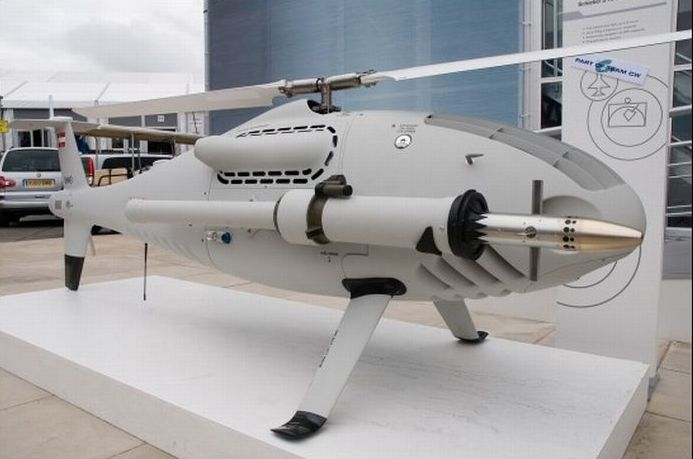|
|
Unmanned Aerial Vehicle (UAV)
|
To some extent, the ultimate goal in the development of autonomy technology is to replace the human pilot. It remains to be seen whether future developments of autonomy technology, the perception of the technology, and most importantly, the political climate surrounding the use of such technology, will limit the development and utility of autonomy for UAV applications. Also as a result of this, synthetic vision for piloting has not caught on in the UAV arena as it did with manned aircraft. NASA utilized synthetic vision for test pilots on the HiMAT program in the early 1980s, but the advent of more autonomous UAV autopilots, greatly reduced the need for this technology.
Interoperable UAV technologies became essential as systems proved their mettle in military operations, taking on tasks too challenging or dangerous for troops. NATO addressed the need for commonality through STANAG (Standardization Agreement) 4586. According to a NATO press release, the agreement began the ratification process in 1992. Its goal was to allow allied nations to easily share information obtained from unmanned aircraft through common ground control station technology. STANAG 4586 – aircraft that adhere to this protocol are equipped to translate information into standardized message formats; likewise, information received from other compliant aircraft can be transferred into vehicle-specific messaging formats for seamless interoperability. Amendments have since been made to the original agreement, based on expert feedback from the field and an industry panel known as the Custodian Support Team. Edition Two of STANAG 4586 is currently under review. There are many systems available today that are developed in accordance with STANAG 4586, including products by industry leaders such as AAI Corporation, CDL Systems, and Raytheon, all three of which are members of the Custodian Support Team for this protocol.
• Endurance
Because UAVs are not burdened with the physiological limitations of human pilots, they can be designed for maximized on-station times. The maximum flight duration of unmanned, aerial vehicles varies widely. Internal-combustion-engine aircraft endurance depends strongly on the percentage of fuel burned as a fraction of total weight (the Breguet endurance equation), and so is largely independent of aircraft size. Solar-electric UAVs hold potential for unlimited flight, a concept originally championed by the AstroFlight Sunrise in 1974 and the much later Aerovironment Helios Prototype, which was destroyed in a 2003 crash.
|
|









